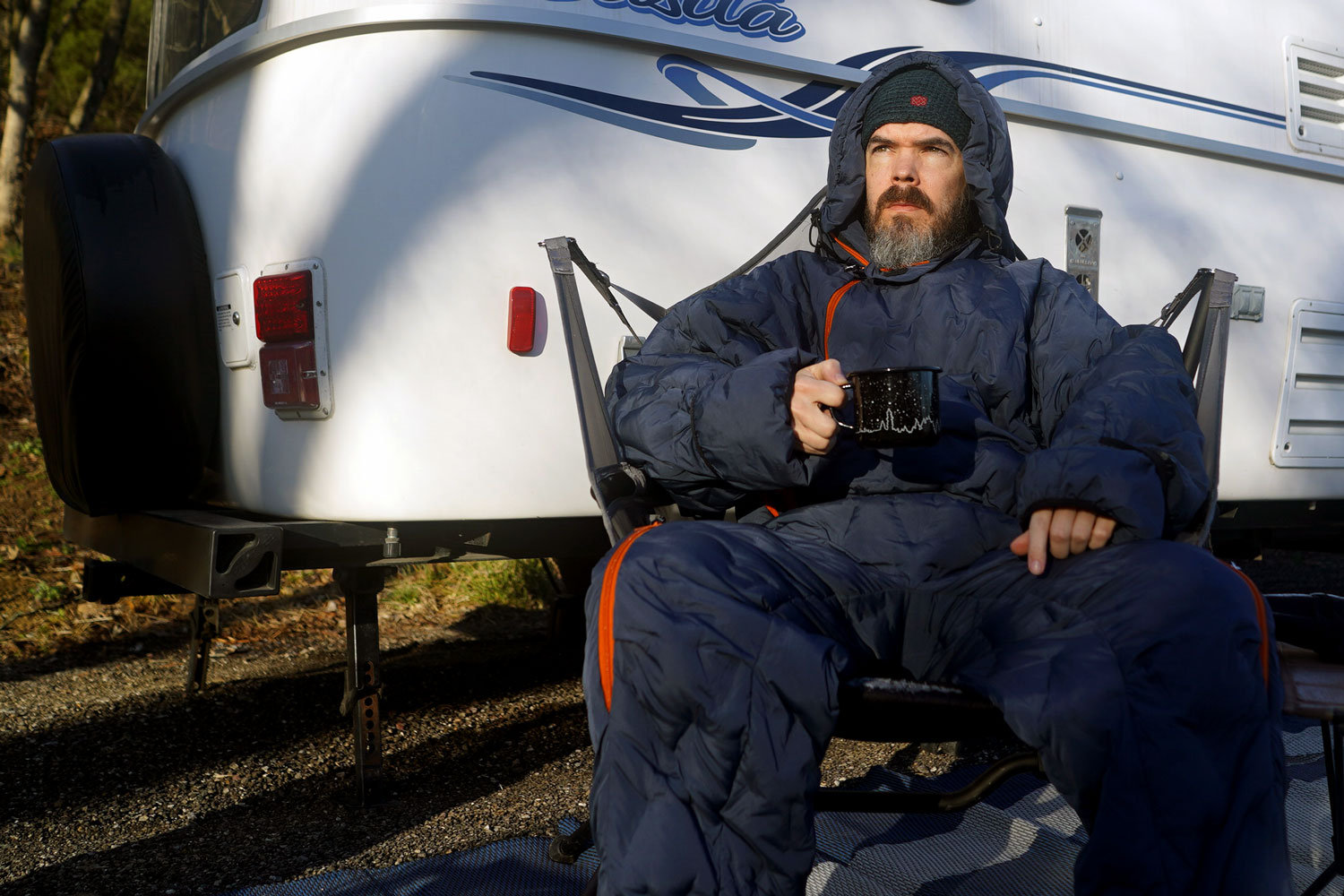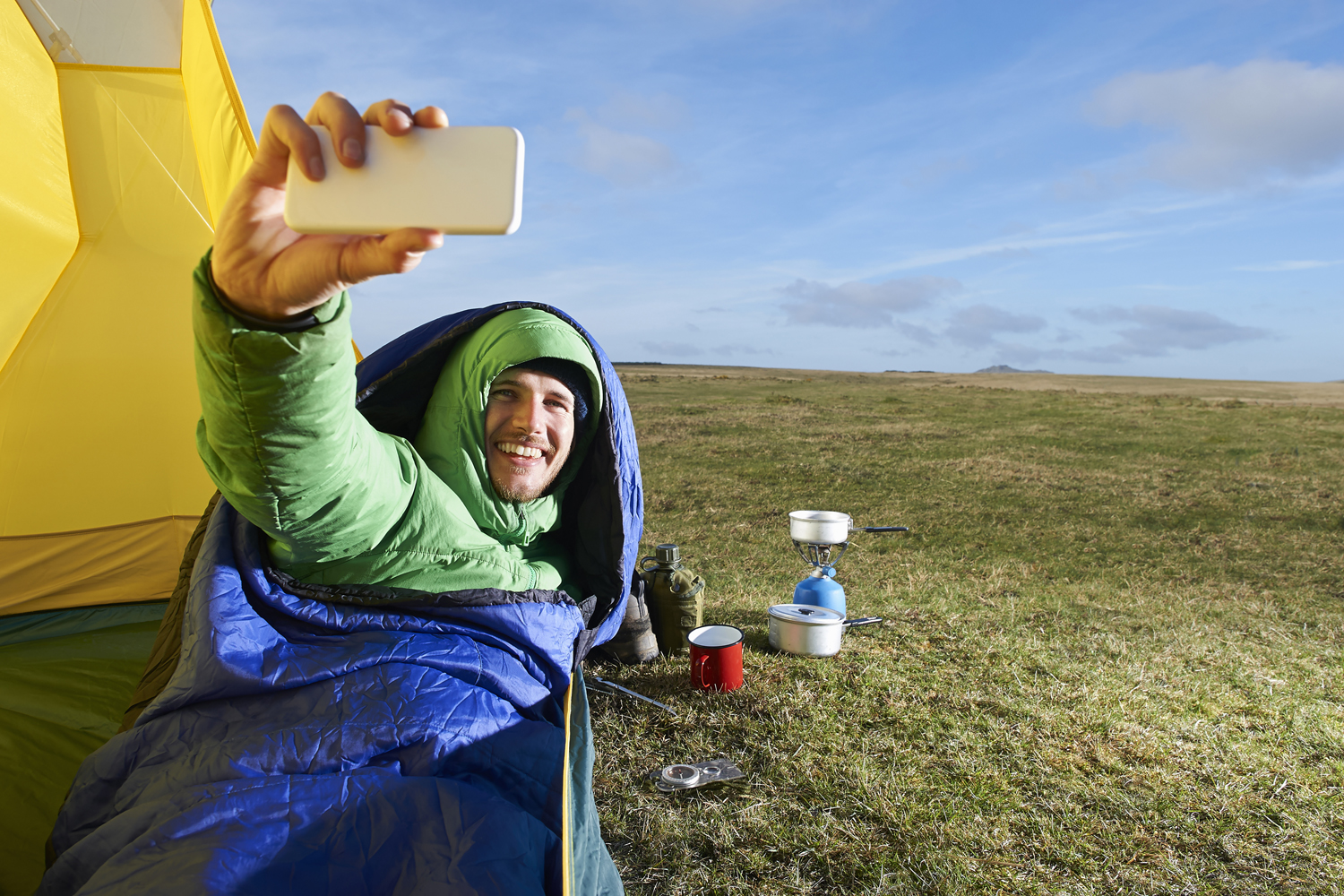It’s one of the oldest camping debates around; do you layer up or strip off before climbing into your sleeping bag? Call it an old wives tale, call it camping folklore, call it what you want; there are strong opinions on both sides of the divide. For every believer in the benefits of being buck-naked, there will be someone who argues that layering up simply makes sense. Well, I’m not one to shy away from throwing my two cents into the debate, so here’s my take on the old problem.
Remember, before we get too in-depth, that a sleeping bag is just one component of your camping sleep system. However you adorn yourself overnight, you’re only going to remain warm by using an appropriate sleeping bag for the season, as well as an insulated sleeping pad. Without these, it won’t matter whether you layer up or sleep naked; you’ll still wake up cold and uncomfortable.

How do sleeping bags work?
Sleeping bags are filled with insulation — either down feathers or synthetic fibers — that traps the heat your body generates. This then creates what can be thought of as a micro-climate inside your sleeping bag, where warm air circulates around your body. This circulation is the root of the myth. People believe that if you don’t allow the air to circulate, then your body won’t all be benefiting from the warmth inside the sleeping bag.
There is some truth in this theory, though. If you wear too many clothes, or your clothes are bulky enough that they push against the outside of the sleeping bag, then there isn’t space for that micro-climate to be created. You need your sleeping bag to be able to loft — where the insulation has room to trap the warm air — and bulky clothes pushing against this can stop this from happening. It’s the same reason that if you have a sleeping bag that is too tight in the toe box and your toes push against the end, you will always wake up with cold feet.

So should you sleep naked in a sleeping bag?
This one is easy: no, you shouldn’t. That’s not to say you have to layer up in your sleeping bag, but regardless of temperature, it’s usually a good idea to at least wear a pair of wicking underwear for hygiene reasons — the same reason we also always use a sleeping bag liner. This also means that if you’re caught short in the middle of the night and desperately need to leave your tent to answer nature’s call, you don’t have to scramble around in the dark to find something to throw on.
The only time it’s a good idea to wear nothing in your sleeping bag is when your clothes are all soaked through. In this instance, warmth and comfort trump hygiene and decency — but remember to keep some clothes at hand for midnight trips to the bushes. Wearing clothes in a sleeping bag definitely keeps you warmer, so long as they’re the right clothes, but they also help to regulate temperature and moisture levels.

What should you wear in a sleeping bag, then?
The best options for clothing yourself inside a sleeping bag align with camping ideas in general, unsurprisingly. This means no cotton, as it holds moisture against your skin. Your best choice is a set of clean and dry Merino wool baselayers, but failing this, synthetic layers are a great option and may end up being lighter in your pack. These layers don’t just keep you warm in your sleeping bag, they also manage your moisture effectively and prevent you from waking up in a cold sweat.
The general rule here is to avoid bulky layers and don’t wear so much that you prevent your sleeping bag from lofting. As I mentioned earlier, if your sleeping bag doesn’t have space to create its own micro-climate, then the cocoon of warm air won’t form around you. This doesn’t mean you shouldn’t wear anything at all, but bulking out to the point that you’re stuffed into your sleeping bag is just going to squash all of the insulation and stop it from trapping your escaping body heat.
Don’t forget the hat, too. While the studies that showed we lose the majority of the heat from our heads have been debunked, you should still keep a hat handy for those cold nights. Any exposed area of your body is going to pour heat into the tent, so put the hat on, and if you still get cold, pull the drawstring tight on your sleeping bag’s hood.

Bonus camping tips for a warm night
If you’ve got your sleep system correct, but you still find you get cold, there are some extra steps you can take for a warm night under the stars. Firstly, calories are key, and always get up to pee — they weren’t meant to rhyme, honest. After a long day on the trail in the rain, you might be tempted to get straight into bed and leave the food until morning, but without those calories, your body has no fuel to keep you warm. All you’ll get is a cold night in a tent and poor sleep, and the situation will be even worse the next day. Spend the time taking on calories, and you’ll be grateful for it in the long run. A friend of mine has a saying on these sorts of trips, ‘be bothered.’
Secondly, if you feel the call of nature in the night, be bothered. Two minutes outdoors saves hours of discomfort. Even when the rain is lashing against the tent walls and the world is crashing down around you, you will always feel better for relieving yourself than you will for trying to hold it in. And that’s not just because you no longer need to pee. Your body expends a whole load of energy keeping that liquid warm inside you. Get rid of that liquid, and that energy goes to keeping you warm instead.
Finally, if you still feel cold, make yourself a hot water bottle. If you have a water bottle that can take hot water — like a Nalgene bottle — use those five minutes before you go to bed to heat some water and pre-heat your sleeping bag. Most people prefer this in the toe box of their sleeping bag, heating them from the toes up. Two things to remember here; don’t boil the water, and don’t totally fill your bottle; otherwise, the pressure may pop the lid and leave you in a much worse situation.



